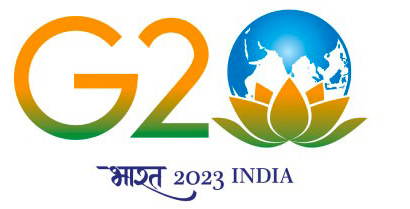The G20 should prioritise a Common Digital Future where technology is affordable, accessible, and interoperable. This agenda extends to developing economies beyond the G20, including the Pacific Islands where digital public infrastructure, digital financial inclusion, and digital job skills are all important development issues. All G20 members have committed to the UN’s Common Agenda and the Secretary-General’s Roadmap for Digital Cooperation which seeks to close the digital gap and support global cyber capacity building. India, as G20 Chair and a leader in cybersecurity issues, is well-placed to progress this agenda. Australia, as a member of both the G20 and the Pacific Islands Forum, bears a special responsibility to stand up for the digital development needs of the Pacific islands.
It is tempting to focus discussions of digital security in the Pacific around flagship initiatives, such as the Coral Sea Cable System connecting Papua New Guinea and the Solomon Islands to Sydney via submarine fibre optic cable; the recent US$1.6 billion takeover of Digicel’s Pacific branch by Australia’s Telstra; or the various training, workshops, and conferences taking place across the region. However, G20 economies have a task to think more creatively about how they can partner with Pacific island-states on digital resilience, defined as the ability to mitigate criminal and malicious attacks and recover from incidents, strengthen communities’ responsible use of internet-enabled platforms and services, and harden data security and privacy guarantees.
Partner countries should work towards a vision of the Pacific that is digitally connected in a secure and safe way by working with the Pacific governments, communities and regional organisations. Examples from Australia’s digital engagement show pathways to achieve this.
Working with governments
First, countries need to partner with Pacific governments. The quick uptake and ubiquity of digital technology have confronted governments around the world, including Pacific Island states, with a capacity shortfall in recognising, assessing, and regulating the impact on social life, trade and business, and political structures.
New technologies tend to exacerbate existing government vulnerabilities. Pacific governments have already begun to depend on private corporations for important tasks such as disseminating public information and managing digital identity schemes and other e-services.
Due to their limited market size and dependence on international aid, Pacific countries have been faced with the introduction of different types of digital technologies, platforms, and applications – often ill-suited to the local context and hard to maintain. This is compounded by Pacific cultural norms which make it challenging to say no to offers of assistance.
Ensuring a responsible and sustainable introduction of digital technology requires dynamic and collaborative arrangements between government decision-makers and private sector companies. There is an opportunity for partner countries to play a role as a conduit for such conversations and serve as caring digital neighbours. For example, the Australian government could offer its convening power to Pacific Island countries and help them address cybersecurity concerns. Australia could also offer domestic technology solutions as digital public goods to benefit Pacific counterparts, such as online e-service offerings or cybersecurity awareness campaigns managed out of Service New South Wales or Services Victoria.
Partner countries can further assist Pacific governments to strengthen their own capabilities and capacity. Part of this effort would be to support the development of national cybersecurity strategies that reflect investment priorities and threat perceptions. One such example is Australia’s support for Papua New Guinea’s National Cyber Security Policy. It can also include workforce development schemes and work placement opportunities. The CERT Tonga Cybersecurity Workforce Development Programme (CWDP), developed in partnership with CERT New Zealand, includes work-attachment opportunities and sharing of materials and resources to help experienced and aspiring practitioners build practical skills and understanding of cybersecurity issues.
Another example is the Cyber Safety Pasifika programme. Led by the Australian Federal Police, the programme delivers activities to law enforcement personnel in 18 Pacific Island countries in the areas of cyber safety awareness and education, development of cybercrime legislation and policy, and upskilling police in cybercrime investigations. It is an important part of regional efforts to counter cybercrime and to help keep communities safe.
Working with communities
Second, partner countries should support Pacific communities through investments in cybersecurity resilience that benefits people’s e-safety and ensure they have a positive experience online. There is a shared interest in protecting good governance, combating the spread of disinformation and preventing cybercrime given the risk to communities.
Education is foundational to help people going online to recognise both bad and good behaviour and to recognise misinformation. It is critical for governments to offer a conducive environment where social media companies, community safety and advocacy groups, and media bodies can work together to balance staying safe with having a positive experience online.
An example of cooperation in this field is the partnership between Australia’s eSafety Commissioner and Fiji’s Online Safety Commission which involves fostering more positive online experiences, focusing on supporting diverse and remote communities and reaching the most at-risk people with resources and tools. This could be extended to other governments and partner countries to support Pacific countries to establish their own eSafety commissioner-type roles or a regional mechanism to strengthen cyber safety for children, parents, and other communities most at risk
In creating a safe space for communities, there needs to be consideration of the communal use and benefits of digital technology and how it might affect future generations, which differs from a western society view focused on the immediate individual benefits. Partnerships between Pacific and other governments should enshrine the Principles for Digital Development, harmonisation of approaches among like-minded donors and an alignment with domestic cybersecurity priorities.
Building a regional ecosystem
Finally, partner countries should support the regional ecosystem for cybersecurity resilience. Perceptions of sovereignty are sensitive when cooperating on cybersecurity programmes. There is a risk that efforts which boost cybersecurity resilience can intrude on a country’s sense of sovereignty and interfere with culture, communities, and society. Thus, support for regional cybersecurity resilience should be channelled through a process of close consultation and engagement with Pacific neighbours. This will require a deliberate effort to understand and engage the diverse community of forums, initiatives and individuals who operate in the digital development, cybersecurity and online rights domains in the Pacific.
The Cyber Smart Pacific 2022 awareness programme launched in Fiji in October is an example of a regional collaborative effort of Pacific Cyber Security Operational Network (PaCSON) partners and friends across the Pacific to develop a programme with a Pacific look and feel, using familiar Pacific ocean creatures to encourage local communities to implement four key steps to be more secure online.
The Global Forum on Cyber Expertise, a recognised global platform for cyber capacity building, has already taken steps to strengthen cyber capacity building efforts in the Pacific through the recent establishment of a Pacific Hub. Based in the region, the team has started their operations through in-country visits to Pacific island stakeholders to gain an on-the-ground validation of past and present initiatives, requirements and means of delivery to ensure that efforts are in the context of the Pacific with a Pacific flavour. The hub is set to grow into an independent and authoritative source of knowledge, information and advice for Pacific governments, implementers and donor governments on cyber security and safety issues as well as appropriate means of delivering technical assistance.
There is a clear appetite and interest in Pacific nations to strengthen their uptake of digital technologies as they help to grow social connections, business operations and remote delivery of public services. G20 member countries have a shared responsibility in preventing and responding to cybersecurity challenges, in particular those that affect developing regions such as the Pacific and to build partnerships to work towards the UN Sustainable Development Goals.
This piece draws on an AP4D report “What does it look like for Australia to be a Partner on Digital Resilience and Transformation in the Pacific”.




